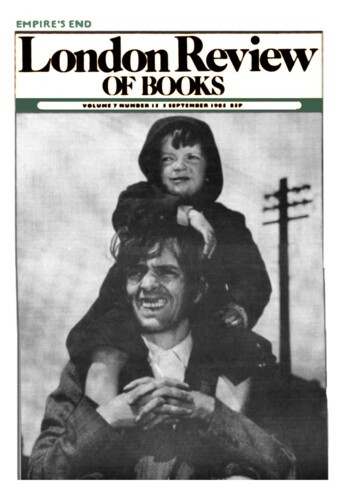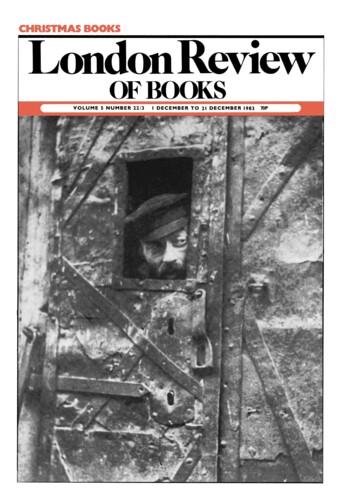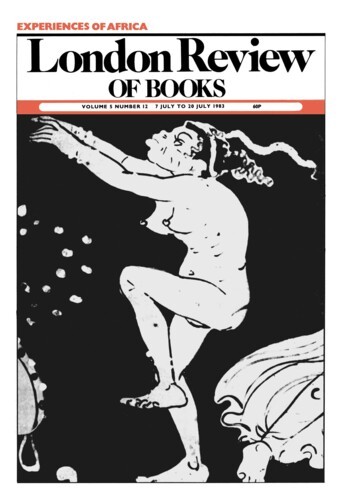Painting the map red
William Boyd, 5 September 1985
The story of the South African gold and diamond fields and of the men who rose to wealth and notoriety as a result of their exploitation has stimulated writers since the 1870s, when diamonds were first discovered. And yet amongst the millions of words there are curious lacunae, particularly in the area of biography. The key figures are Cecil Rhodes, Barney Barnato, Alfred Beit, J.B. Robinson, Solly Joel and Julius Wernher. None has a definitive biography, and on someone such as Beit there is an almost complete silence. This is even more true of the minor figures, such as Rhodes’s henchman Rutherfoord Harris, his partner Charles Rudd, or even Leander Starr Jameson. Paradoxically, there exists a first-rate scholarly account of Rhodes’s involvement with the annexation of Bechuanaland – yet no similar treatment of his life. Even the most recent biography (by J. Flint, 1976) is inadequate on certain areas of his life. If one wants to learn about Neville Pickering, his first private secretary and the great love of his life (Rhodes, in his second will, left his estate to Pickering), one must turn to Brian Roberts’s Cecil Rhodes and the Princess, where, for the first and only time, Pickering’s early life and background are accurately delineated. Other murky areas – Rhodes’s dealings with Lobengula and the Matabele, the formation of the British South Africa Company, the widespread concession racketeering – still await their chroniclers.’



